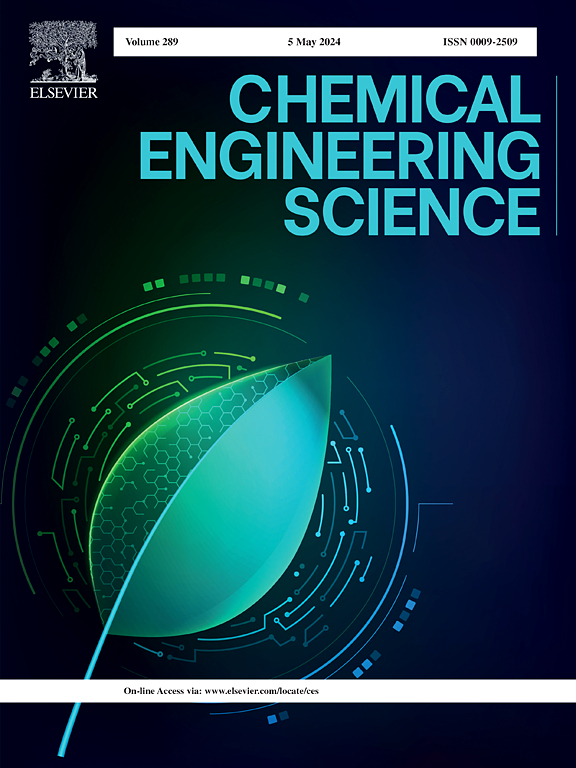Fluid dynamics of gas–liquid slug flow under the expansion effect in a microchannel
IF 4.1
2区 工程技术
Q2 ENGINEERING, CHEMICAL
引用次数: 0
Abstract
The expansion of bubbles in viscous fluids in microchannels is normally overlooked. The bubble dynamics in liquids with varying viscosities (1.15 ∼ 101.47 mPa·s) and contact angles (29.3 ∼ 137.6°) in a microchannel were investigated under various inlet pressure drops (8 ∼ 202 kPa). The findings indicate that bubble formation occurs within a squeezing-shearing regime over a wide Capillary number range of 0.0023–0.43. Interestingly, the wettability affects the bubble length rather than the bubble shape, and the poor wettability can hinders the decrease of length in higher viscosity fluids. Bubble expansion causes decreasing curvature radii of bubble caps, and non-linear rapid increases in its length and velocity along the microchannel. The bubble’s pressure–volume relation at the inlet and outlet confirms the validation of Boyle’s law in slug flow. A linear decline in pressure along the microchannel was deduced from this law. Further analysis suggests that besides the friction of the liquid slug, the pressure drop is influenced by the interface effect, film flow, and liquid circulation. Finally, a model for total pressure drop was developed, which effectively predicted the length and velocity of bubbles in the expansion process. This study offers valuable insights for a deeper understanding of bubble expansion behaviors in microchannels.微通道膨胀效应下的气液蛞蝓流流体动力学
微通道中粘性流体中气泡的膨胀通常被忽视。在不同的入口压降(8 ∼ 202 kPa)条件下,研究了微通道中不同粘度(1.15 ∼ 101.47 mPa-s)和接触角(29.3 ∼ 137.6°)的液体中气泡的动力学。研究结果表明,在 0.0023-0.43 较宽的毛细管数范围内,气泡是在挤压-剪切机制下形成的。有趣的是,润湿性影响的是气泡长度而不是气泡形状,润湿性差会阻碍高粘度流体中气泡长度的减少。气泡膨胀导致气泡盖曲率半径减小,其长度和速度沿微通道非线性快速增加。气泡在入口和出口处的压力-体积关系证实了玻意耳定律在蛞蝓流中的有效性。根据该定律,压力沿微通道呈线性下降。进一步的分析表明,除了液体蛞蝓的摩擦外,压降还受到界面效应、薄膜流动和液体循环的影响。最后,建立了一个总压降模型,该模型能有效预测膨胀过程中气泡的长度和速度。这项研究为深入了解微通道中的气泡膨胀行为提供了宝贵的见解。
本文章由计算机程序翻译,如有差异,请以英文原文为准。
求助全文
约1分钟内获得全文
求助全文
来源期刊

Chemical Engineering Science
工程技术-工程:化工
CiteScore
7.50
自引率
8.50%
发文量
1025
审稿时长
50 days
期刊介绍:
Chemical engineering enables the transformation of natural resources and energy into useful products for society. It draws on and applies natural sciences, mathematics and economics, and has developed fundamental engineering science that underpins the discipline.
Chemical Engineering Science (CES) has been publishing papers on the fundamentals of chemical engineering since 1951. CES is the platform where the most significant advances in the discipline have ever since been published. Chemical Engineering Science has accompanied and sustained chemical engineering through its development into the vibrant and broad scientific discipline it is today.
 求助内容:
求助内容: 应助结果提醒方式:
应助结果提醒方式:


